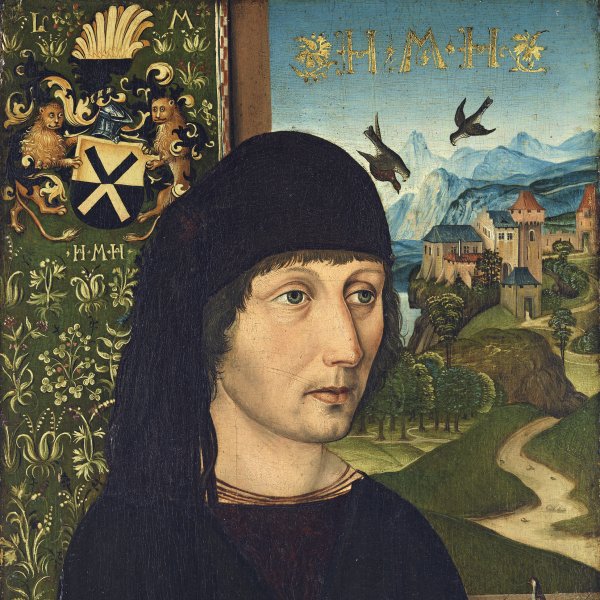Michael Wolgemut
Wolgemut was a German painter who is of particular importance to the field of printmaking. He initially trained with his father, the painter Valentin Wolgemut, then continued his studies in Nuremberg with Hans Pleydenwurff. On the latter’s death Wolgemut married his widow and took on Pleydenwurff ’s son Hans as an assistant. Around 1470–71 Wolgemut was in Munich working with Mälesskircher. He returned to Nuremberg the following year where he remained active, particularly in the production of altarpieces, until around 1480, from which date he focused primarily on printing and printmaking. Wolgemut’s work conforms to some extent to the Nuremberg style with a preference for line over colour and a use of restrained gestures in the figures. His early works are clearly influenced by Van der Weyden, Dieric Bouts and Aelbert van Ouwater, while his later output increasingly looks to Martin Schongauer’s graphic oeuvre.
Wolgemut’s paintings include the altarpiece for the Marienkirche in Zwickau, dated 1479, which is his first documented commission as an independent painter. Among his later altarpieces are those for the church of Saint Lawrence in Nuremberg of around 1485, and the famous Peringsdörfer Altarpiece, now in the Friedenskirche of that city.
In addition to these religious works, Wolgemut also executed portraits, including Portrait of Levinus Memminger (Museo Thyssen-Bornemisza, Madrid), Portrait of Ursula Tucher (Schloss Willhelmshöhe, Kassel), and Portrait of a young Man (Detroit Institute of Fine Arts). Wolgemut also produced designs for stained glass but he is best known for his activities as a printmaker and is particularly noted for his illustrations, executed in collaboration with Wilhelm Pleydenwurff, for the Schatzbehalter by Stephan Fridolin (Nuremberg, 1491), and the Liber Chronicarum, also known as the NurembergChronicle or World Chronicle of 1493, produced in collaboration with Hartmann Schedel. The latter was a particularly important project in the context of printing and book illustration and had a profound impact on the work of Wolgemut’s famous pupil Albrecht Dürer.

